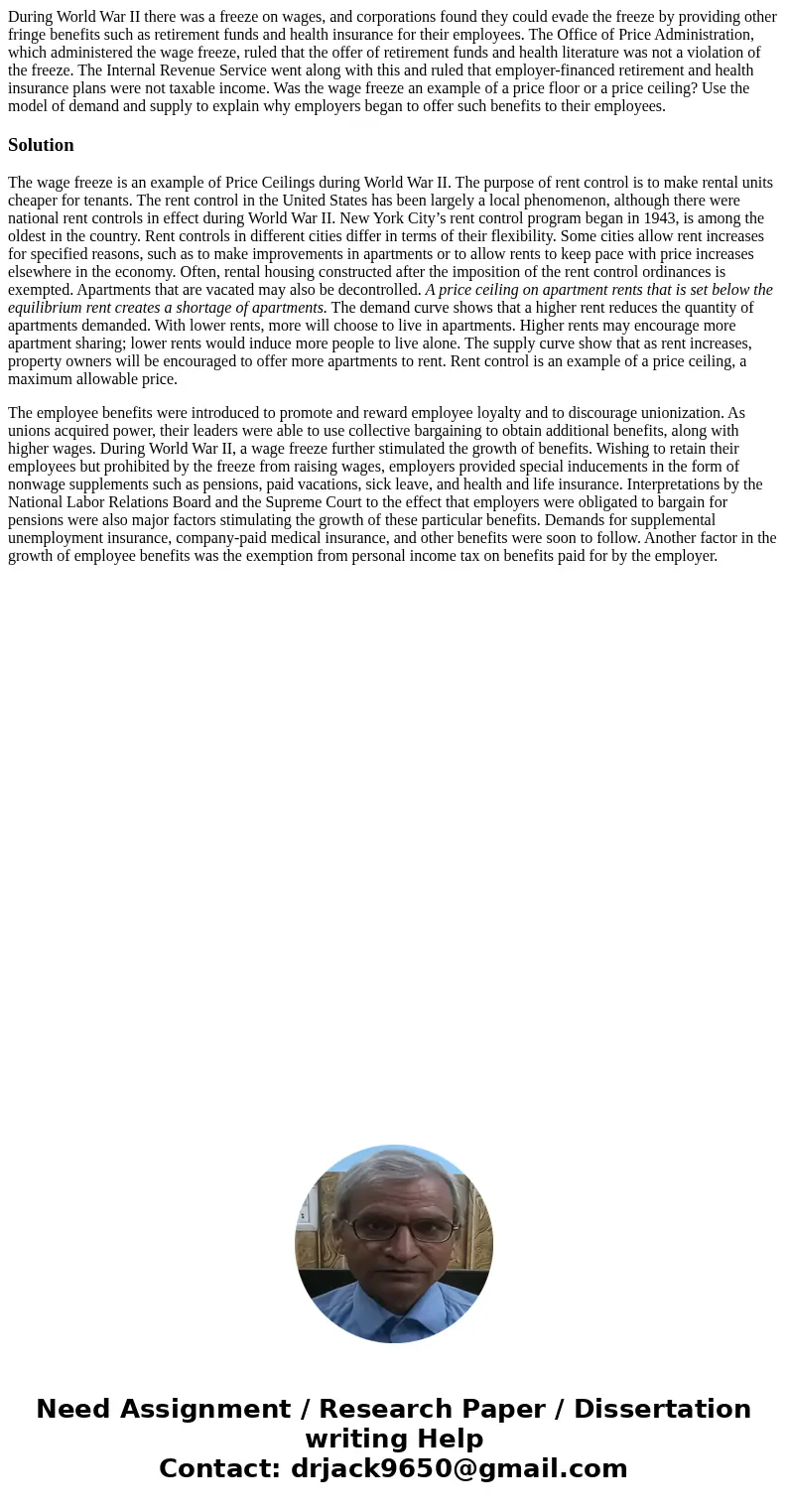During World War II there was a freeze on wages and corporat
During World War II there was a freeze on wages, and corporations found they could evade the freeze by providing other fringe benefits such as retirement funds and health insurance for their employees. The Office of Price Administration, which administered the wage freeze, ruled that the offer of retirement funds and health literature was not a violation of the freeze. The Internal Revenue Service went along with this and ruled that employer-financed retirement and health insurance plans were not taxable income. Was the wage freeze an example of a price floor or a price ceiling? Use the model of demand and supply to explain why employers began to offer such benefits to their employees.
Solution
The wage freeze is an example of Price Ceilings during World War II. The purpose of rent control is to make rental units cheaper for tenants. The rent control in the United States has been largely a local phenomenon, although there were national rent controls in effect during World War II. New York City’s rent control program began in 1943, is among the oldest in the country. Rent controls in different cities differ in terms of their flexibility. Some cities allow rent increases for specified reasons, such as to make improvements in apartments or to allow rents to keep pace with price increases elsewhere in the economy. Often, rental housing constructed after the imposition of the rent control ordinances is exempted. Apartments that are vacated may also be decontrolled. A price ceiling on apartment rents that is set below the equilibrium rent creates a shortage of apartments. The demand curve shows that a higher rent reduces the quantity of apartments demanded. With lower rents, more will choose to live in apartments. Higher rents may encourage more apartment sharing; lower rents would induce more people to live alone. The supply curve show that as rent increases, property owners will be encouraged to offer more apartments to rent. Rent control is an example of a price ceiling, a maximum allowable price.
The employee benefits were introduced to promote and reward employee loyalty and to discourage unionization. As unions acquired power, their leaders were able to use collective bargaining to obtain additional benefits, along with higher wages. During World War II, a wage freeze further stimulated the growth of benefits. Wishing to retain their employees but prohibited by the freeze from raising wages, employers provided special inducements in the form of nonwage supplements such as pensions, paid vacations, sick leave, and health and life insurance. Interpretations by the National Labor Relations Board and the Supreme Court to the effect that employers were obligated to bargain for pensions were also major factors stimulating the growth of these particular benefits. Demands for supplemental unemployment insurance, company-paid medical insurance, and other benefits were soon to follow. Another factor in the growth of employee benefits was the exemption from personal income tax on benefits paid for by the employer.

 Homework Sourse
Homework Sourse